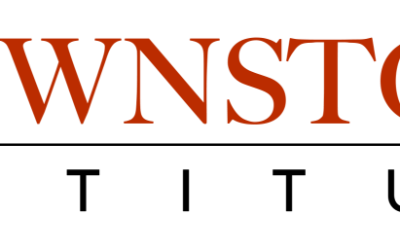In British Columbia this week, a band of dairy farmers gave up their battle to free the country from the grip of marketing boards. All of us, as consumers of farm products, are the losers, at least for now.
Fourteen rebel farmers decided twelve years ago to sidestep the country’s supply management system. They were trying to change current arrangements that cost shoppers millions of dollars a year.
After years of fluctuating prices, in 1973 the federal government set up supply management programs to regulate the production of milk, cheese, butter, chickens, turkeys and eggs. At a price of zero, farmers were granted quotas, limits on the amount they could sell, based on the share of the market they supplied in that year.
Although initially "free", the quotas developed a considerable value of their own. Farmers who want to increase their herds or flocks have to purchase quotas from existing holders, who gain a windfall profit on the first transfer. On average, the purchase of quota rights now represents 25% of a farmer’s costs. Those who buy them are understandably reluctant to see the system reversed, because they will lose that investment. They are trapped.
A small amount of foreign imports is allowed to trickle in, duty-free. Rights to that trade are also purchased in the form of quotas, and their purchasers turn over fast profits, often tripling the value of their investments. Many of these operators aren’t farmers at all. Middlemen, some of them non-Canadian, for instance, hold about 25% of the quotas on chicken imports. By virtue of a permit, they buy chickens in the United States and sell them at much higher Canadian prices.
In Ontario, farmers who try to break into the poultry industry have to pay about $20 for each bird, just to purchase quota. This expense moves to the supermarket, where Canadian consumers pay 125% to 150% more for chicken than Americans.
The 25-year-old supply management experiment has had predictable effects: depressed production, less innovation, inflated purchase prices, difficult entry for potential competitors, and of course, fewer jobs. The marketing boards try to set prices by factoring all the costs borne by producers, to protect the industry, but it doesn’t work.
Despite efforts to control them, poultry prices move up and down in tandem with the prices of other meats like beef and pork, in both Canada and the U.S. A policy specifically designed to defeat the market fails to do so. We’re just left with higher prices because of the cost of quotas, and producers have no more protection than they ever did.
Western Canadian suppliers have long been the poor stepsisters in the national system of quotas and price-fixing, which heavily favour Ontario and Québec. La belle province has a quarter of the country’s population but rights to almost half of all milk production, because the original quotas were set to reflect production levels in 1972. They are locked in stone.
Cheese producers have complained for years that they couldn’t get enough raw milk from the marketing boards to fill demand. British Columbia is only allotted 5% of the milk quotas for the whole country, even though it has 12% of the nation’s population.
That prompted frustrated farmers there to try and get around the strict quota system. They set up dairy herds specifically to supply cheese plants that sold only outside the province, and therefore, they claimed, were exempt from the control of the BC Milk Marketing Board.
The rebels won their first court test, but an appeals court overturned the decision. They took their case to the BC Supreme Court, which eventually ruled against them and granted injunctions to stop their milk production, worth roughly $8 million a year. Faced with no income and no money left to launch another appeal, last week the farmers gave up.
We’re stuck with marketing boards, and higher prices, at least for now.


